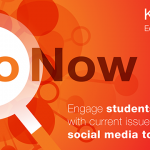Category Archives: Uncategorized
Contextualizing Civic Engagement & Justice
Perspectives on Civic Engagement, Community Outreach, and Social Justice
The Collaborative Research Education Partnership: Community, Faculty, and Student Partnerships in Practice Evaluation
Journal of Community Practice
Ashley Cruce, Barara Flory, Mary Beth Gallagher, Cynthia A. Loveland Cook, Susan S. Tebb, & Marla Berg Weger
The author focuses on the use of Research Education Partnership (REP) a university-community research model based on equal partner collaboration between students, faculty, and community social agencies. The four collaborations in this study were based at the non-profit Emmett & Mary Martha Doerr Center for Social Justice Center located at St. Louis University. Of the four projects, Heritage House received the most examination. All four proposals, developed by separate collaboration teams and funded by the Center, focus on some aspect of social injustice and were evaluated for the benefits and challenges of application of research skills to social work practices and vice versa.
Formal and Informal Collaborative Projects: Engaging in Industry with Environmental Awareness
Science Education
Yehudit J. Dori & Revital T. Tal
The authors focus on an Israeli science curriculum that combines formal instruction, informal science (outside of the classroom experiences such as field trips, museums etc.), technology, and societal needs (STS) resulting in a final collaborative project that is assessed by experts, teachers, and the community. The project used case studies for the formal education aspect, volunteers from the community as guest lecturers and judges, and market research all leading to the development of a final product. This approach supports a growing body of information about the benefits of a relationship between formal and informal education, the benefits of collaboration with the community as well as the positives of heightened student, teacher, and parent interest.
Civic Partnerships: The Role of Libraries in Promoting Civic Engagement
Resource Sharing & Information Networks
Nancy Kranich
Citing a decline in civic involvement in the United States, the author focuses on how libraries can foster civic engagement by expanding opportunities for informed, thoughtful discussions about common concerns thus encouraging active citizenship. Examples of civic partnerships discussed include the library as civic space, the library as a public forum, the library as a civic information center, the library as a community-wide reading club, and the library as an enabler of civic liberties. The author advocates for a close working relationship between libraries and community partners to promote citizen participation in problem solving and decision-making.
New Media and Models for Engaging Under-Represented Students in Science
AIP Conference Proceedings
Noah D. Finkelstein & Laurel M. Mayhew
The authors address the need to include under-represented students in the fields of Science, Technology, Engineering, and Mathematics (STEM) through a collaborative program between the University of Colorado Partnerships for Informal Science Education in the Community (PISEC) and pre-college age students. Using remote location instructors and Stop Action Motion (SAM) movie technology, students in an informal after-school setting were able to use computers to generate nonverbal movies that allowed the demonstration of the understanding of science concepts without being hindered by language limitations. A case study of a third grade minority student is presented as an illustration of how social interaction and appropriate tools can foster learning.
The Impact of a Community-University Collaboration: Opening the “black box
Canadian Journal of Nonprofit and Social Economy Research
Lynne Siemens
The author focuses on the many administrative, academic, and governing components of universities that affect successful collaboration between universities and communities. Through the use of a case study at the University of Victoria, British Columbia, Canada, the complicated process of creating a graduate program designed to meet a community-perceived need is examined from the perspective of regulatory restrictions placed on both the university and community members. Recommendations are suggested to increase collaboration through better mutual understanding of both community and university settings.
—
Cruce, A., Flory, B., Gallagher, M. B., Loveland Cook, C. A., Tebb, S. S., & Weger, M. B. (2004). The Collaborative Research Education Partnership. Journal of Community Practice, 12(3-4), 21.
Dori, Y. J., & Tal, R. T. (2000). Formal and informal collaborative projects: Engaging in industry with environmental awareness. Science Education, 84(1), 95-113. doi:10.1002/(SICI)1098-237X(200001)84:1<95::AID-SCE7>3.0.CO;2-W
Kranich, N. (2005). Civic Partnerships: The Role of Libraries in Promoting Civic Engagement. Resource Sharing & Information Networks, 18(1-2), 14.
Mayhew, L. M., & Finkelstein, N. D. (2008). New Media and Models for Engaging Under‐Represented Students in Science. AIP Conference Proceedings, 1064(1), 155-158. doi:doi:http://dx.doi.org/10.1063/1.3021241
Siemens, L. (2012). The Impact of a Community-University Collaboration:
Opening the “black box”. Canadian Journal of Nonprofit and Social Economy Research, 3(1), 20.






